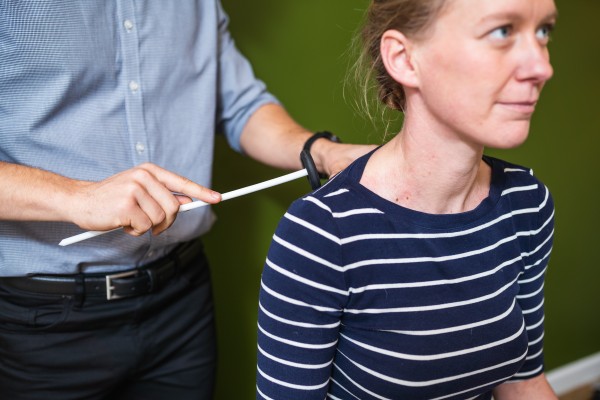The One Reflex You MUST Get Checked!
Posted Jan 30, 2023 at 16:53
Posted Jan 30, 2023 at 16:53

When coming in for an adjustment, the first thing we get clients to do is sit on the bench with their hands resting on their legs, palms facing upwards. This gives us easy access to most joints we want to assess in a seated position, most commonly the neck and shoulders. But one question I get asked every week by clients is ‘what do you hit me on the shoulder every time?’.
It's not as bad as it sounds. We're using the reflex hammer to tap a part of your shoulder blade to check to see if it produces movement of that arm. This is called your shimizu reflex, or scapulohumeral reflex. Unlike the patellar reflex in your knee, the shimizu reflex is one that we don’t want to see. Your arm should stay completely still when we tap your shoulder.
If the shimizu reflex is present, we’ll see a ‘chicken wing’ like movement of the arm out to the side, or a lifting of the shoulder. The reason we check this with every new client, and continue to monitor it with all existing clients, is because of what it tells us. If the reflex is present, on one shoulder or both, it indicates a lesion somewhere above the C3 vertebra.
There can be many different causes for the lesion. Some of the most common ones include osteophytes (bony spurs), cervical disc herniation, trauma, or infection, but the list goes on. Studies have also shown that more than 95% of people with a spinal cord compression above C3 will have a positive shimizu reflex.
It's a very quick screening tool for us, especially when we match up the information with all the other clinical and functional assessments we do with every client. This allows us to determine if it’s something that we can help manage conservatively, or if further investigation is needed.